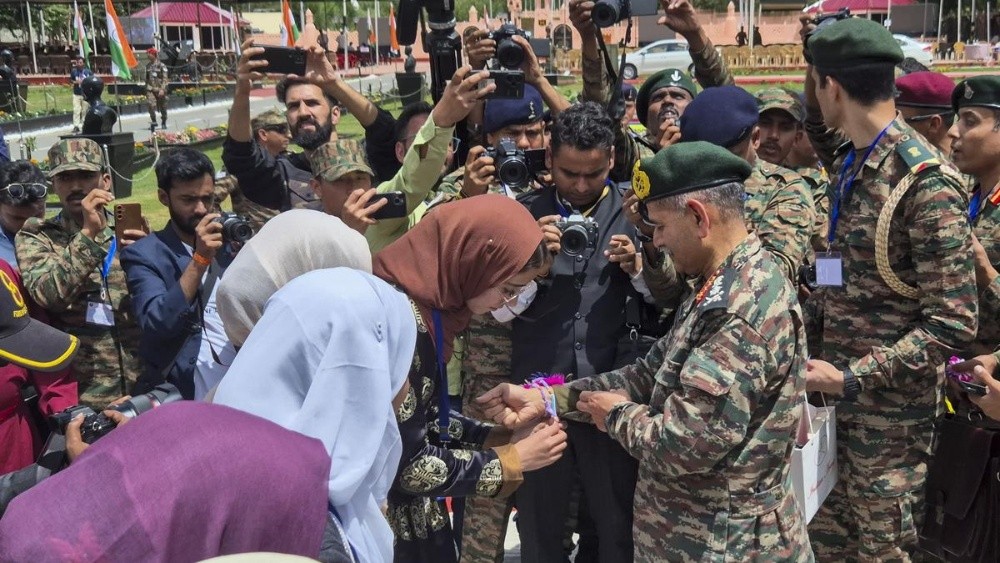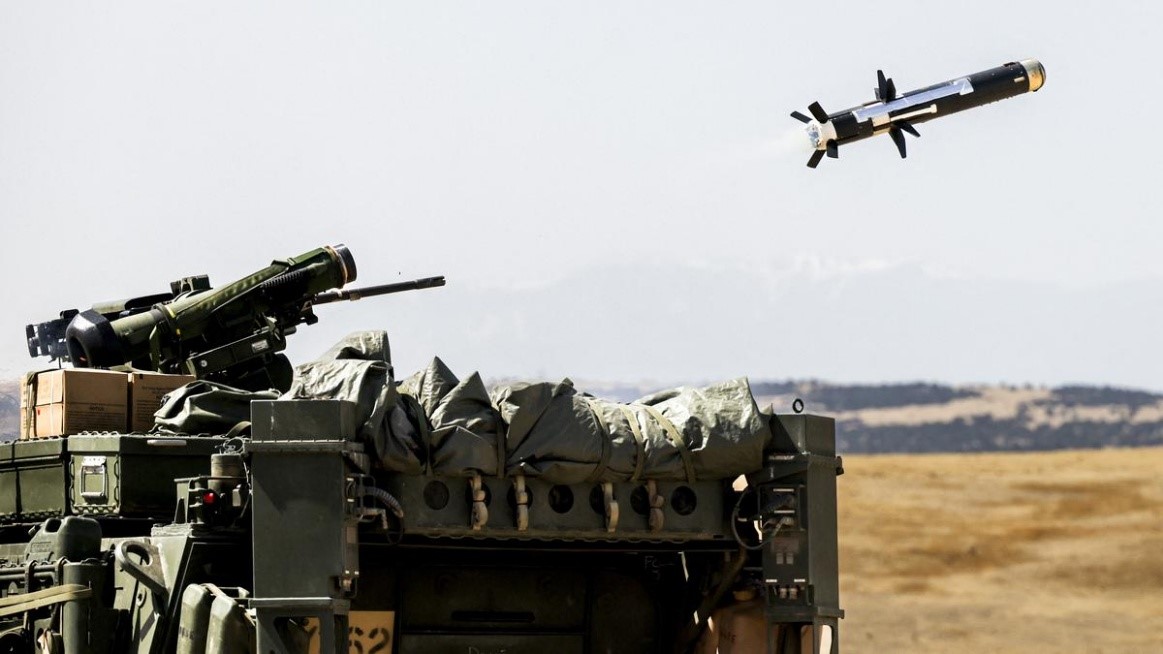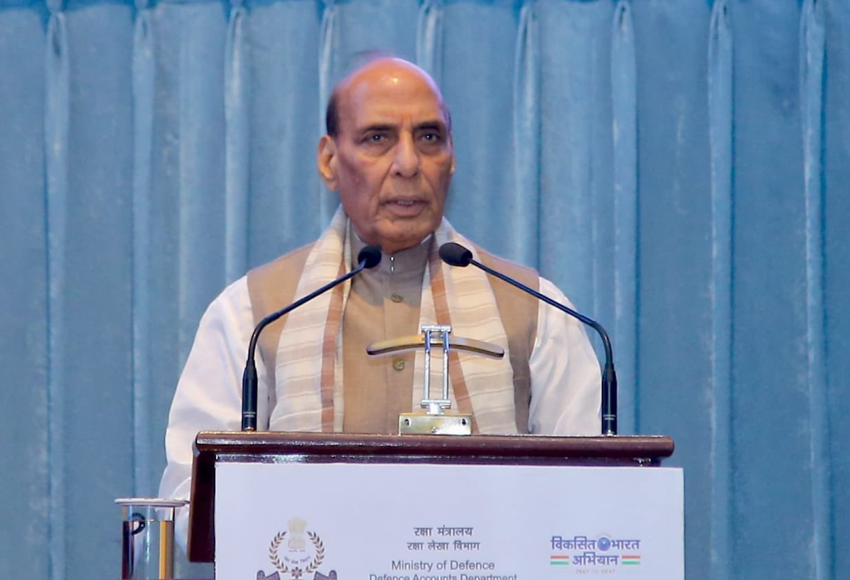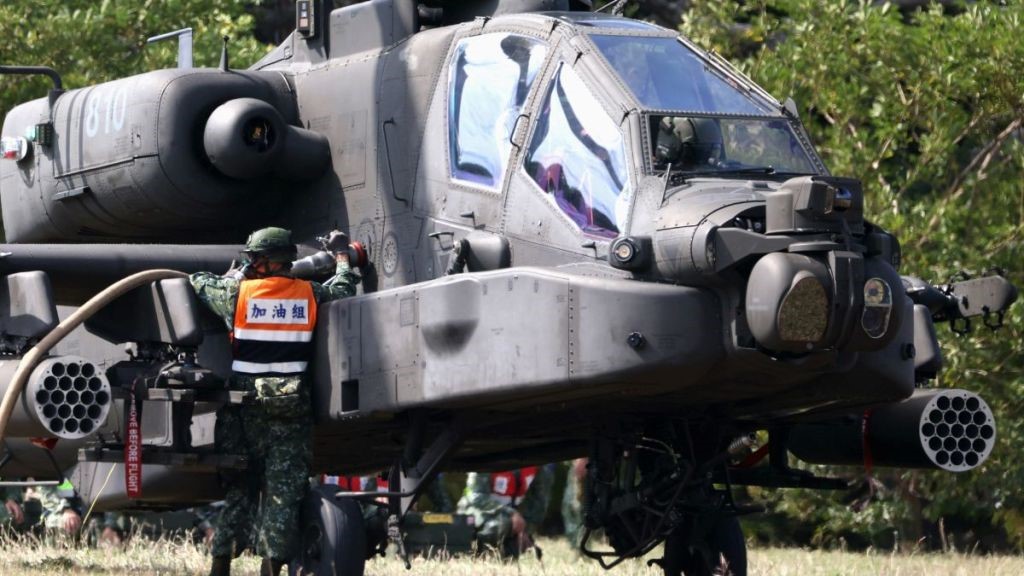Description

Source: PIB
Disclaimer: Copyright infringement not intended.
Context:
- The Ministry of Defence has notified the fifth Positive Indigenisation List (PIL) consisting of 346 defence items in a major increase to Aatmanirbharta in defence production.
Details:
- The concept of ’Aatmanirbhar Bharat’ or ’Self-Reliant India’ has gained substantial momentum, especially in the realm of defence manufacturing.
- As part of this vision, the Ministry of Defence has introduced multiple Positive Indigenisation Lists, which aim to strengthen domestic production capabilities and minimize dependence on foreign suppliers.
- The most recent announcement in this series is the 5th Positive Indigenisation.
Some Examples of Positive Indigenisation Lists (PIL)
- Line Replacement Units (LRUs): These are self-contained assemblies that can be easily replaced in a larger system.
- Radars and avionics for aircraft
- Fire control systems for tanks
- Sonar systems for submarines
- Sub-systems: These are smaller components that make up a larger LRU.
- Missile guidance systems
- Electronic warfare equipment
- Communication systems
- Spares and Components: These are individual parts that may need regular replacement or maintenance.
- Engine components for aircraft and vehicles
- Weapon system parts
- Sensors and communication modules
Indigenization Lists- https://www.iasgyan.in/daily-current-affairs/indigenisation-list
Read About Srijan Portal:
https://www.iasgyan.in/daily-current-affairs/srijan-portal#:~:text=The%20portal%20is%20a%20%22one,a%20search%20function%20as%20well.
About Positive Indigenisation List (PIL)
The Positive Indigenisation Lists (PIL) is a key initiative by the Indian Ministry of Defence (MoD) to promote self-reliance (Atmanirbhar Bharat) in the defence sector. This policy aims to reduce dependence on foreign arms imports and strengthen the domestic defence industry.
The government actively promotes domestic defence production through various policies and activities, including the Production Linked Incentive (PLI) scheme. As part of these efforts, four PLI lists have been released, with the first list of 351 items published in December 2021. This list includes highly complex systems, sensors, weapons, and ammunition, which will be procured from indigenous sources according to the staggered timeline outlined in the Defence Acquisition Procedure 2020.

Objectives:
- Enhancing National Security: By ensuring that key defense equipment is produced within the country, India can safeguard itself from supply chain disruptions and geopolitical uncertainties.
- Promoting Local Industry: Encouraging domestic production stimulates the local economy, creates jobs, and raises technological innovation.
Key Features of the Indigenisation Lists
- Categorization of Defence Items: The lists categorize items that will no longer be imported. This includes a range of equipment from simpler components to advanced systems like naval utility helicopters and light combat aircraft.
- The aim is to progressively increase the complexity and value of items included in subsequent lists.
- Phased Implementation: Each list comes with a timeline, providing manufacturers with a clear roadmap and sufficient time to develop or scale up their production capacities.
- Deadlines ensure that both public and private sector manufacturers align their strategies and investments accordingly.
- Collaborative Development: The initiative encourages collaboration between various stakeholders, including government research and development agencies, private companies, and international partners where necessary.
- Innovation and R&D: The lists emphasize the importance of research and development, pushing domestic manufacturers to innovate and ensure that the equipment meets the highest standards of quality and functionality.
Impact on Domestic Defence Industry
- Boost to Local Manufacturers: Companies in the defence sector are experiencing a surge in orders and investment, leading to increased production capacity and technological upgrades.
- Skill Development and Employment: The initiative is creating numerous job opportunities across various skill levels, from skilled engineers to technical operators.
- It also necessitates training and upskilling programs, ensuring that the workforce is capable of meeting sophisticated production requirements.
- Technological Advancements: Domestic firms are being pushed to innovate and adopt advanced technologies, which is progress in a culture of research and development.
- This is significant for maintaining the competitiveness of Indian defence manufacturers on a global scale.
Challenges and the Way Forward
- Meeting Quality Standards: Ensuring that domestically produced equipment meets international quality standards is a significant challenge. Continuous quality assurance and stringent oversight mechanisms are essential.
- Infrastructure Development: Developing the necessary infrastructure to support large-scale manufacturing, including supply chain logistics and testing facilities, is critical.
- Sustained Investment in research and development: Long-term investment in research and development is vital for the sustained success of this initiative. Government support and incentivization play an essential role in this aspect.
- Technological Capabilities: Bridging the gap between domestic capabilities and the technological complexity of certain items requires sustained investment in research & development and collaboration between academia and industry.
- Timelines and Efficiency: Meeting the timelines for indigenization requires efficient execution by both public and private stakeholders. Delays can impact operational readiness.
- Transparency and Competition: Ensuring a transparent and competitive environment within the domestic industry is central to stand-in efficiency and quality in production.
Conclusion
- The Fifth Positive Indigenisation List is a testament to India’s commitment to becoming self-reliant in defence manufacturing. It is a strategic move that not only enhances national security but also propels economic growth and technological advancement.
- While there are challenges to be addressed, the systematic and phased approach adopted by the government provides a strong framework for overcoming these hurdles. The success of this initiative will play a critical role in realizing the larger vision of ’Aatmanirbhar Bharat’ and establishing India as a significant player in the global defence market.
- By nurturing a strong domestic defence industry, India is poised to achieve greater self-sufficiency and strategic autonomy, ensuring that its armed forces have access to the best equipment necessary to safeguard national interests.
Must Read Articles:
INDIAN DEFENCE SECTOR
INDIAN DEFENCE EXPORT
India's Defence Production Climbs to Record High
Defence Technology Council
Source:
PIB
|
PRACTICE QUESTION
Discuss the significance of the Positive Indigenisation Lists (PIL) introduced by the Ministry of Defence in promoting self-reliance in the Indian defence sector. What are the key challenges faced in the implementation of this initiative, and how can they be addressed to ensure the success of 'Aatmanirbhar Bharat' in defence manufacturing?
|
















